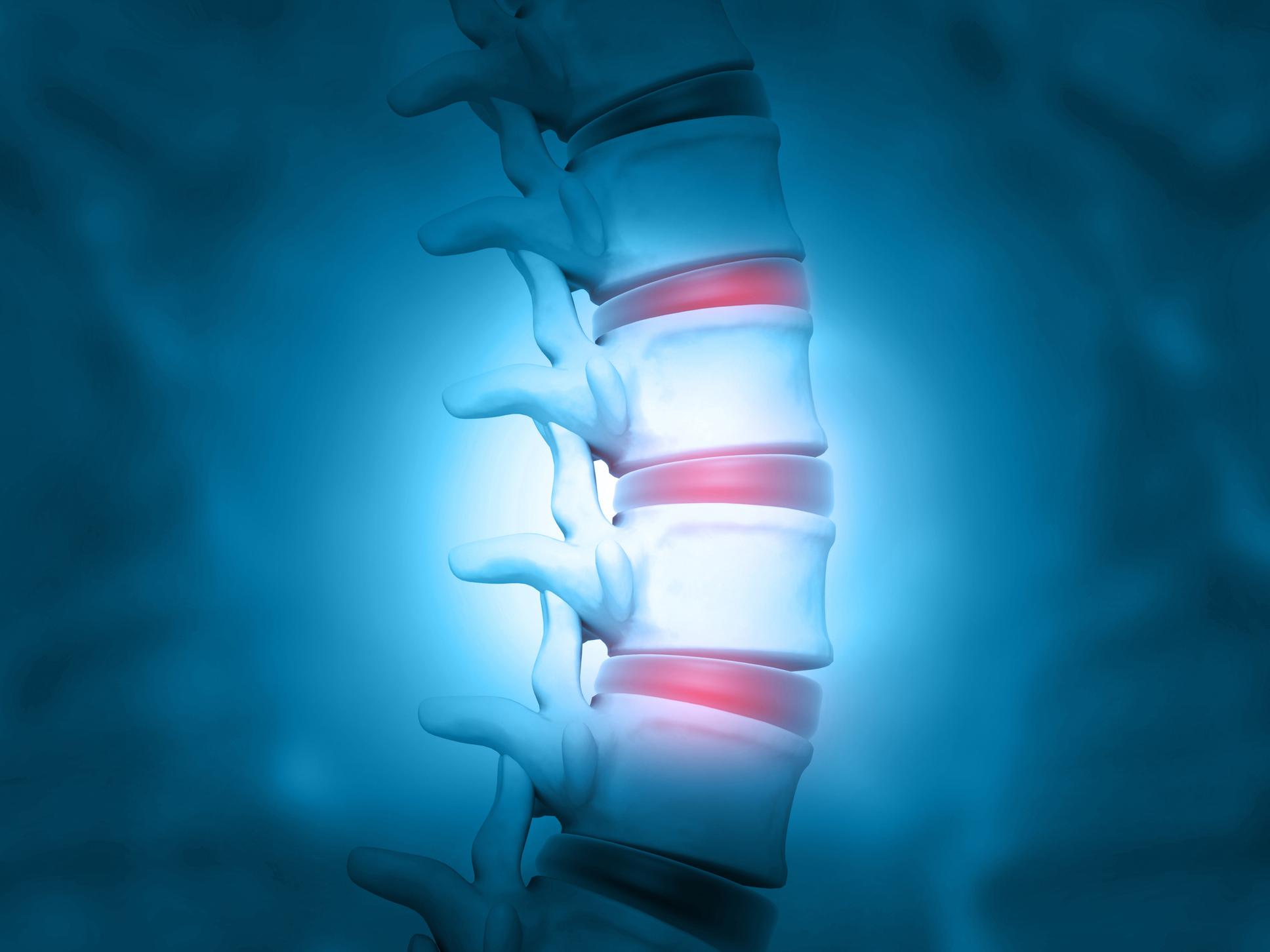

It’s February, and if you live in the northern hemisphere, research shows that this is the month when you’re most susceptible to a vitamin deficiency that can have far-reaching health consequences, mostly involving your bones.
You see, unlike other vitamins, vitamin D is difficult to find in the food we eat. Your body produces it when we’re exposed to UV (ultraviolet) sunlight. And the further north you live, the less UV exposure you get during those long, cold winter months.
On top of that, there are lifestyle and hormonal factors that steal vitamin D.
If you’re a postmenopausal woman, you’re at particularly high risk of being vitamin D deficient, and of suffering from lower back pain, quite possibly because of damage to your spine.
Vitamin D keeps back pain away
The idea that a lack of vitamin D is related to back pain in women is not a new one.
A 2013 study evaluated over 9000 women between the ages of 60 and 85 years old and found a direct correlation between low vitamin D levels and back pain.
But that’s not all.
Women who were deficient in vitamin D reported more cases of severe back pain, more fractures, and greater limitation in performing activities of daily living, than women with adequate levels of vitamin D.
Estrogen, Vitamin D and disc degeneration: The perfect storm
After menopause, a woman’s estrogen levels drop. A study comparing 1566 premenopausal women with 1382 men in the same age group showed how this hormone change affects many women.
At the younger end of the scale, while the women were still in pre-menopause, their male counterparts were more vulnerable to disc degeneration.
But by the time women reached postmenopausal age, they had developed more severe disc degeneration than their age-matched male peers.
Researchers found the most drastic difference in disc degeneration between women and men in the first 15 years after the onset of menopause.
Other signs of D deficiency
A vitamin D deficiency isn’t always painful, and it’s easily mistaken as a symptom of other conditions.
Hair loss, fatigue, dizziness and sleep difficulties are all signs of deficient levels of vitamin D in the bloodstream.
If one or more of these symptoms troubles you, and if it is persistent, it’s a good idea to get your vitamin D levels checked.
BPA exposure also robs you of vitamin D
Bisphenol A (BPA) is a well-known toxin that, unfortunately, is hard to avoid. It’s everywhere: in plastic water bottles and containers, in dental sealants, even in your cash register receipts, where it enters your body right through your skin.
What’s more, when you take into account BPA metabolites (the compounds that are created as BPA passes through our bodies), we’re even more contaminated with this poison than we knew.
A study published in the Journal of Clinical Endocrinology & Metabolism found that higher exposure to endocrine-disrupting chemicals like BPA reduces vitamin D levels in your bloodstream
How you can get more vitamin D
Spend more time in the sun. Sunlight is your best source of vitamin D. Even in cold weather when you’re exposed to sunlight, it makes vitamin D from the cholesterol in your skin. The sun’s ultraviolet B (UVB) rays hit cholesterol in the skin cells, providing the energy for vitamin D synthesis to occur.
However, it is harder for mature skin to make ample vitamin D from sunlight exposure, so consider supplementing.
Add vitamin D-rich foods to your diet. Cereals and orange juice are often fortified with vitamin D.
- Salmon – a 5-ounce (100-gram) serving of farmed Atlantic salmon contains 526 IU of vitamin D or 66% of the recommended daily value (DV)
- Herring and sardines – fresh Atlantic herring provides 27% of the daily value of D in each 3.5-ounce serving. If you prefer pickled herring, it will give you about 14% of your daily D requirement in the same serving.
- Canned tuna – about 34% of your DV
- Cod liver oil is an excellent source of vitamin D, especially if you don’t eat fish. It has about 448 IU per teaspoon (56% of the DV).
- Egg yolks – One typical egg yolk contains 37 IU of vitamin D or 5% of the DV. But you would need to consume at least 15 eggs every morning to hit the minimum vitamin D requirement.
- Mushrooms – the only good plant source of vitamin D. They synthesize it from sunlight, just as we do! (Only wild mushrooms, or those exposed to UV light, are rich in vitamin D, as many commercially grown mushrooms are grown in the dark). You can even make your own supply of dried mushrooms that are full of vitamin D, and keep them on hand for soups, stews and more!
- Supplements – consult your doctor about the best dosage for you. Most people are deficient in vitamin D, and levels of 5,000 IU can help get them up and maintain them safely. Look for the form known as D3. It is most like what the body produces when exposed to sunlight (a process that gets harder with age) so it’s easier for the body to absorb and use.
Sources:
- Postmenopause vitamin D deficiency associated with disc degeneration and lower back pain — EurekAlert
- Vitamin D (25OHD) Serum Seasonality in the United States — PLOS ONE
- Association of back pain with hypovitaminosis D in postmenopausal women with low bone mass — BMC Musculoskeletal Disorders
- Estrogen loss a risk factor for disc degeneration, back pain — UPI.com
- Relationships Between Urinary Phthalate Metabolite and Bisphenol A Concentrations and Vitamin D Levels in U.S. Adults: National Health and Nutrition Examination Survey (NHANES), 2005–2010 — The Journal of Clinical Endocrinology & Metabolism
